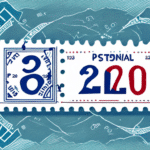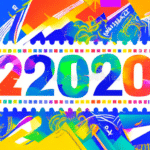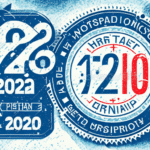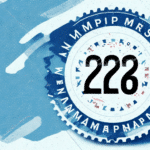What Will the Cost of Stamps Be in 2023?
The cost of postage stamps is subject to various influences, including economic trends, technological advancements, and government policies. As we navigate through 2023, understanding these factors can help predict potential changes in stamp prices. This article delves into the determinants of stamp costs, examines historical pricing trends, and explores future projections to provide a comprehensive outlook on the cost of stamps this year.
Key Factors Influencing Stamp Prices
Economic Conditions
Economic indicators such as inflation rates and consumer purchasing power significantly impact the cost of stamps. According to the Bureau of Labor Statistics, the inflation rate in 2023 is projected to be around 2%, which directly affects production and operational costs for the United States Postal Service (USPS).
Technological Advancements and Consumer Behavior
The rise of digital communication platforms like email and instant messaging has reduced the demand for traditional mail services. This shift influences USPS revenue streams, potentially leading to adjustments in stamp prices to sustain operations.
Cost of Raw Materials
Fluctuations in the prices of raw materials such as paper, ink, and adhesives used in stamp production can lead to changes in stamp costs. Supply chain disruptions or increased material costs necessitate price adjustments to maintain profitability.
Historical Trends in Stamp Pricing
Over the decades, the price of a first-class stamp in the US has increased from 5 cents in 1963 to 55 cents in recent years. Significant hikes, like the 1991 increase from 25 cents to 29 cents, reflect legislative actions aimed at ensuring the financial stability of the USPS. Despite these increases, the USPS remains one of the most affordable postal services globally, offering various mailing options to cater to different needs and budgets.
Impact of Inflation on Stamp Costs
Inflation plays a crucial role in determining stamp prices. Rising production costs due to inflation pressures USPS to periodically increase stamp prices. The expected 2% inflation rate in 2023 is a key factor in the anticipated price adjustments. Additionally, other economic factors such as shifts in consumer behavior and global economic fluctuations further influence stamp pricing strategies.
USPS Funding and Its Effect on Stamp Prices
The USPS relies on federal funding and its revenue from mail operations to sustain its services. With the cessation of the annual $1 billion federal appropriation in fiscal 2023, the USPS must depend more heavily on mail revenues. This dependency is likely to result in increased stamp prices to cover operational costs. Moreover, the decline in traditional mail volume due to digital alternatives has pressured USPS to seek new revenue streams, potentially impacting stamp pricing.
Government Policies and Regulations
Governmental policies, including rate caps imposed by the Postal Regulatory Commission, influence how much USPS can raise stamp prices. With the lifting of these caps in January 2022, USPS gained the flexibility to raise prices beyond inflation rates. Future government decisions regarding postal subsidies and operational regulations will continue to affect stamp pricing dynamics.
Technological Innovations and Future Trends
Modernization Efforts
USPS's initiatives to modernize its infrastructure, such as implementing drones and autonomous vehicles for deliveries, aim to enhance efficiency and reduce costs. These innovations could lead to more cost-effective operations, potentially stabilizing or lowering stamp prices in the long term.
Digital Postage Alternatives
Services like Stamps.com and Endicia offer online postage solutions, allowing users to purchase and print postage from their computers. While these services may involve membership fees, they provide a convenient and often cost-effective alternative to traditional stamps, especially for regular mailers.
Forecasting Stamp Price Increases
Based on current economic indicators and USPS projections, stamp prices are expected to rise by approximately 2% in 2023, mirroring the anticipated inflation rate. However, unforeseen factors such as global economic shifts or significant changes in USPS funding could lead to more substantial price adjustments.
Strategies to Save on Postage
- Bulk Purchases: Buying stamps in larger quantities can often yield discounts, reducing the overall cost per stamp.
- Online Postage Services: Utilizing services like Stamps.com or Endicia can offer savings for those who mail frequently.
- Standard Mail Options: Opting for standard or non-first-class mailing services where appropriate can lower postage costs.
- Pre-sorting and Automation: Ensuring mail is pre-sorted and complies with USPS regulations can qualify for discounted postage rates.
Conclusion
Predicting stamp prices involves analyzing multiple intertwined factors, including economic conditions, technological changes, and government policies. In 2023, a modest increase of around 2% is anticipated, influenced primarily by inflation and operational costs of the USPS. By staying informed and utilizing cost-saving strategies, consumers can navigate these changes effectively. As the USPS continues to adapt to a changing postal landscape, both challenges and opportunities will shape the future of postage costs.






















